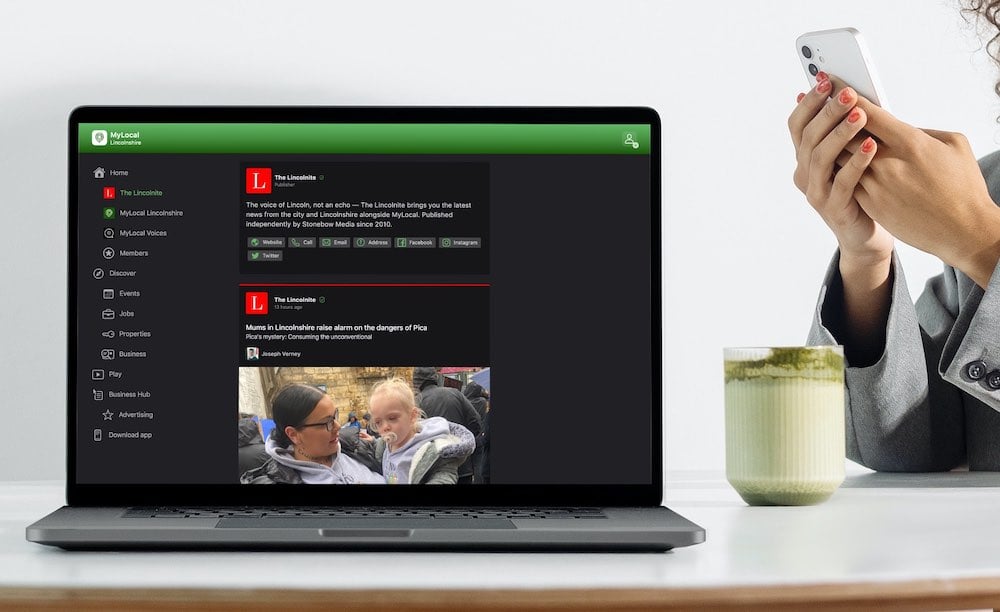Lincoln energy customers are saying they are saving big on household costs as a result of switching to renewable energy in the face of the deepening national cost of living crisis.
With energy regulator Ofgem increasing its price cap this April by 54% to £1,971 a year for the average household and set to put a further higher price cap of £3,549 in October, consumers across the county are looking at how to reduce massive expenditure to affordable levels.
Ofgem is independent of government and is supposed to drive energy prices down, protecting consumers and steering the UK towards a net-zero target – in other words, a cheaper, greener future.
But how is the future of home energy tech shaping up? Is this the right time to go green?
The Lincolnite spoke to two Lincoln businesses who install renewable energy tech and their customers, to see how reliance on clean energy can save you money.
Dan Wood and Craig Tomlinson are the directors at Greenlinc Plumbing and Renewables based in North Hykeham.
They have been designing bespoke systems for home installation of renewable tech for three years, including heat pumps, plumbing, radiators, underfloor heating, solar panels and car charger ports.
They say whilst people are aware of green ways to heat their homes, they often are fed bad press, particularly when it comes to air source heat pumps.
Common gripes include the fact air pumps require space outside the home to be fitted – and for smaller properties this might not be possible, and also the costs

Dan Wood and Craig Tomlinson, directors of Greenlinc Plumbing and Renewables with an air source heat pump ready for installation. | Photo: Greenlinc Plumbing and Renewables
But not everyone knows that with the purchase of an air source heat pump, which typically might cost £10,000, the customer receives a £5,000 grant from the government as part of the ‘Boiler Upgrade Scheme’.
Heat pumps work by using a small amount of energy to move heat from the air outside a home inside the house.
It works by fanning outside air into a collision with low-pressure, low-temperature liquid refrigerant that, on contact with the air, boils to vapour and then passes through a reversing valve into a compressor, which turns the low pressure/temperature vapour into high pressure/temperature vapour, which is channeled though a coil inside the building.
The process is reversed to ensure the pump works in a cyclical pattern, driving heated refrigerant back outside the house to restart the cycle.
Heat pumps are valued because they heat buildings uniformly, meaning there’s no cold spots in the house, but they do not produce the intense heat that a gas or oil burning furnace does and so may ‘switch’ some customers off.
They turn on and off less frequently than conventional heating systems, and the typical heat pump will last 10-25 years.
In Dan’s words, heat pumps are a “newish technology that is advancing every year,” but that for a system to meet your needs the designing stage is crucial.
He said that if you own a heat pump that isn’t running correctly or costing too much you can get in touch with Greenlinc, as it may be something as simple as a setting change.
Dan and Craig’s customer, Patience Thody, from Lincoln who works for the Wildlife Trusts, spoke to The Lincolnite to tell us about her air source heat pump and solar panels that she recently had installed by Greenlinc.
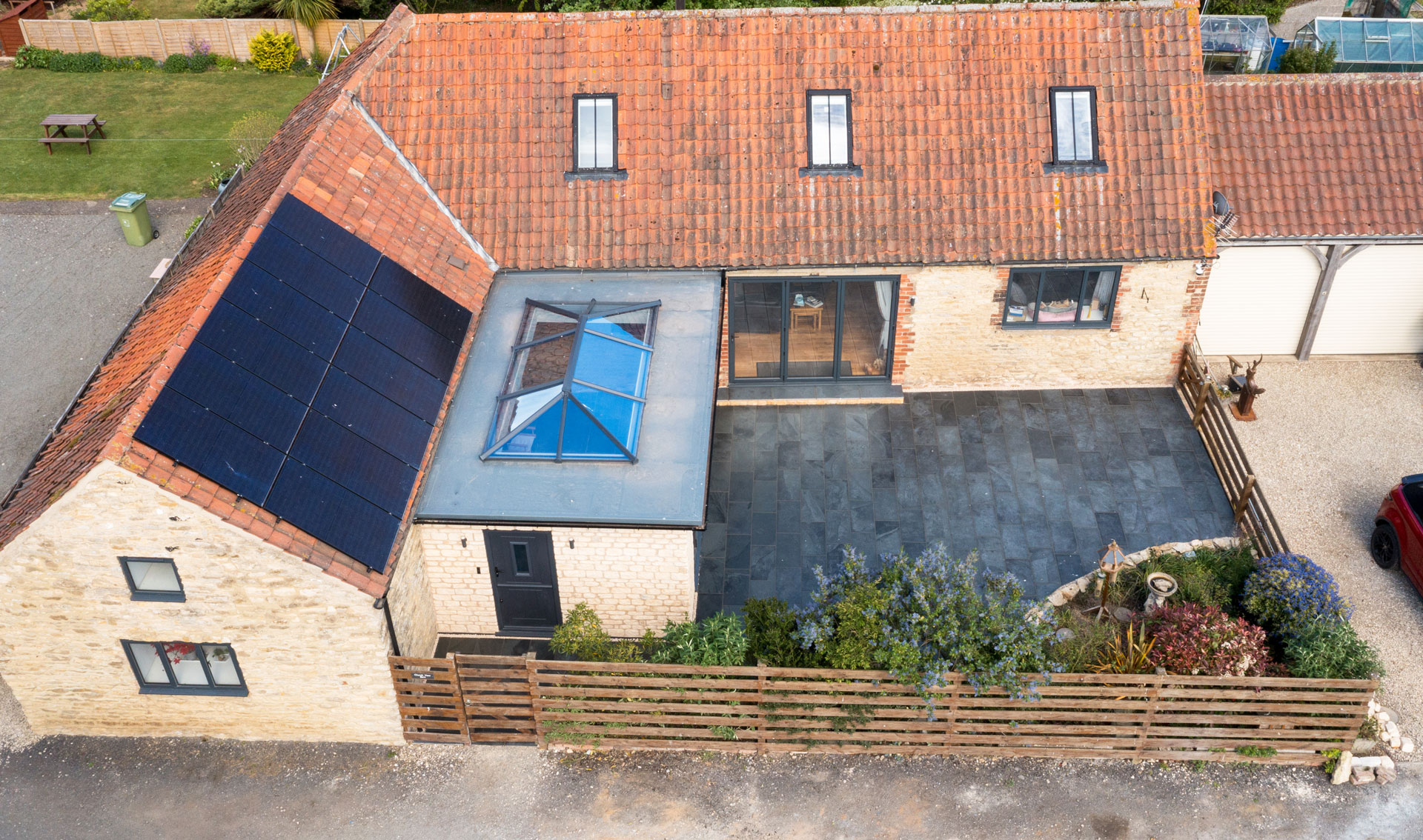
Solar panelling, fitted by Greenlinc Plumbing and Renewables, on Patience Thody’s home. | Photo: Charles Thody Photography
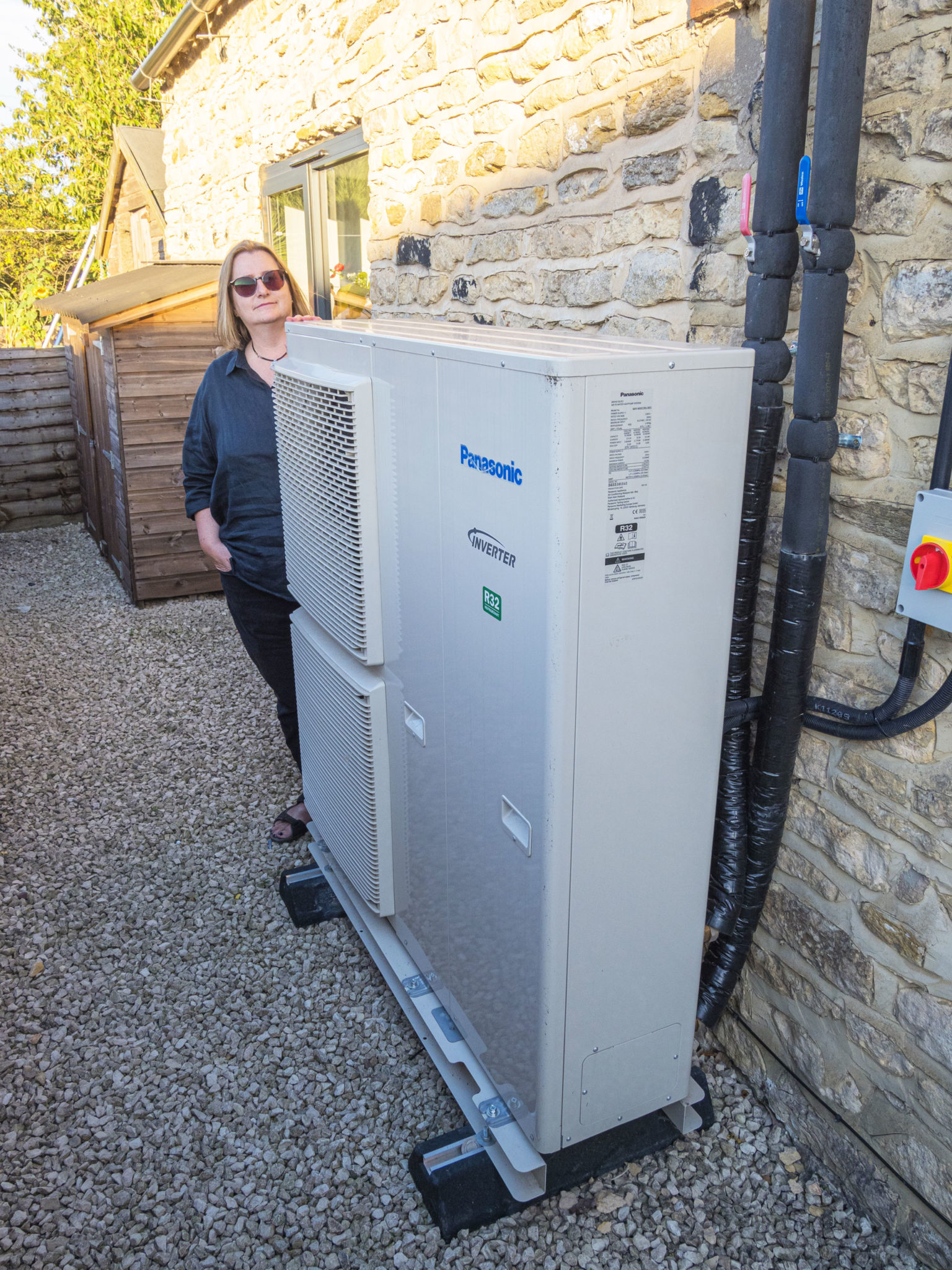
Patience with her air source heat pump, installed by Greenlinc Plumbing & Renewables. | Photo: Charles Thody Photography
She gave two primary reasons for why she has gone green. She wanted to do something good for the planet, but also the “absolute fortune” Calor Gas were going to charge her to move her LPG gas tank was untenable.
Patience said she is probably being saved the doubling and tripling of energy bills by switching to renewables, and is paying what everyone else was paying back before the price hikes.
She told us, however, how the current energy grants, including the Boiler Upgrade Scheme are, however, are not as generous as you might think: “We’re hoping that we might ride the storm a little bit better than most people.
“We’ve still had that capital outlay which was quite a lot. Whereas before we were sat thinking, ‘right we will have paid this back within five years, we would have paid off half our bill’. But actually, that won’t be the case.”
But ultimately Patience said Greenlinc installed the technology “absolutely brilliantly” and that the solar panels and heat pump she had fitted “absolutely” meets her demands.
In fact, she says she wishes she had “gone a bit further” and installed more solar panelling and a battery, which she is now having retrofitted.
She says that solar panels and air source heat pumps (wherever possible) should be installed on new builds at the district planning level, attenuating need for hikes in energy prices.

Jason Herrick (left), customer, with Derrick Denton, director of UK Alternative Energy who fitted this air source heat pump. | Photo: David Bosworth
Derrick Denton is the director of UK Alternative Energy, which have been going since 2009 and employs 21 staff who install renewable systems.
He says the demand for his service has increased as renewable become a very important part of the “big picture” of climate change action.
He says people are getting more and more educated when it comes to sustainable solutions and are getting savvy with money and the savings that can be made by going green.
He explained that this year there has been an uptake of solar power installation by consumers, and that the number of businesses being set up to sell solar panels and heat pumps is growing year on year.
He told The Lincolnite that for a domestic 4 KwH Solar PV (photovoltaic) system you could pay £6,000, but the return you make on the solar panelling depends on roof space and the direction(s) your roof faces.
We spoke to Jason Herrick, semi-retired, from Lincoln. He had bought solar panelling, an air source heat pump and an electric car charge port fitted by UK Alternative Energy and said the reason he made these green upgrades to his home was a mixture of both environmental and financial incentives.
His solar panels system cost him more that it would today, at £11,000 11 years ago it is an investment he says is reaping dividends, so much so that two years ago he had secondary panelling fitted to his front roof space at £4,7k.
Jason remembers when inflation was as high as it is now, at 10% or more and says that once you get your foot in the door you start to learn more about the benefits of green power.
He also owns a Tesla Powerwall – a 13.5 KwH home energy storage system fitted by UK Alternative Energy, which fills up from the solar panels, with a £8,400 cost.
In effect, it stops your energy going to the grid when it isn’t being used.
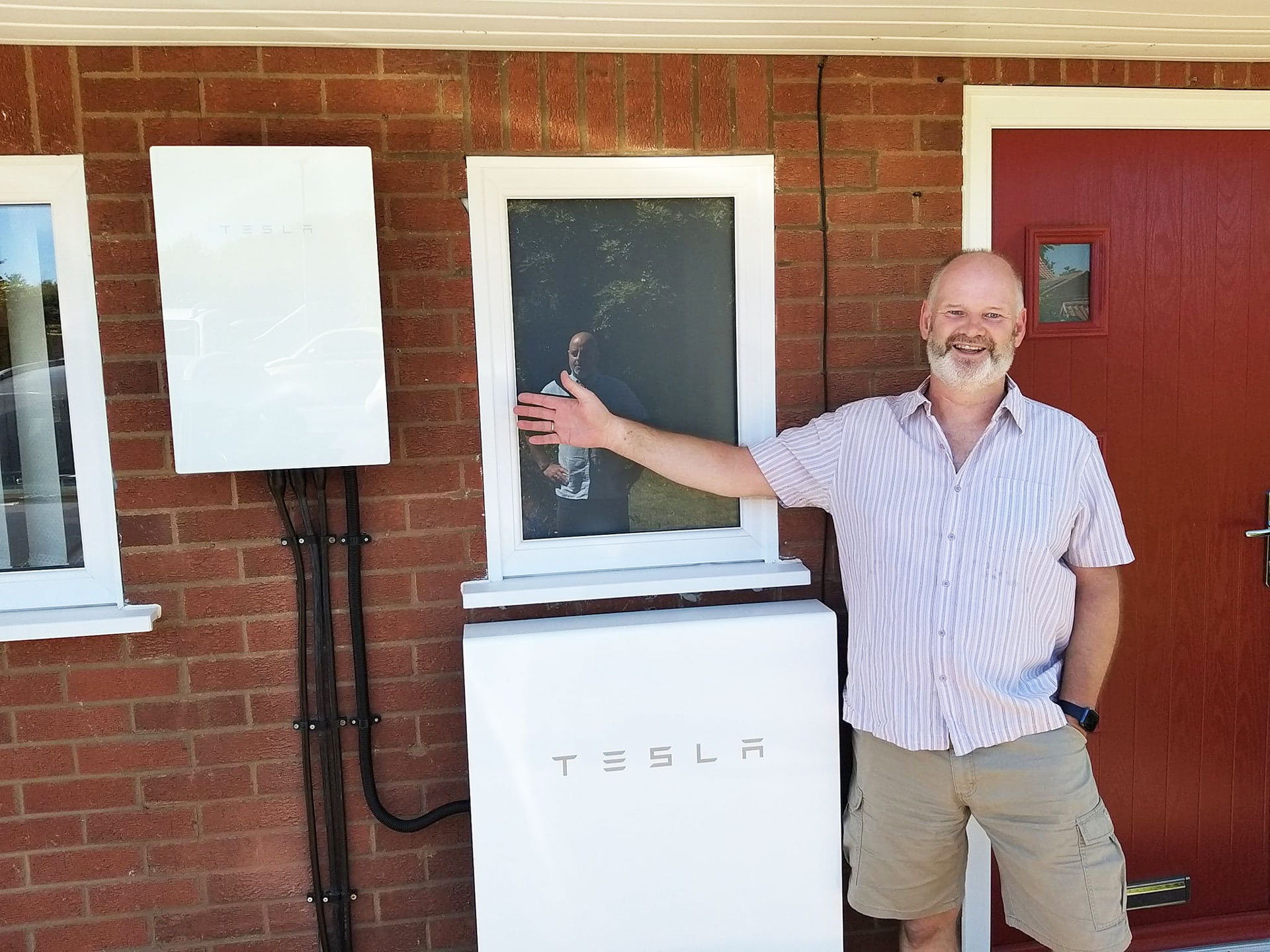
Jason with his Tesla Powerwall, fitted by UK Alternative Energy. | Photo: David Bosworth
It’s an expensive purchase at £8,400, but Jason justifies the outlay because the Tesla saves him having to buy electricity from the grid at the 30p per KwH, and he saves further by using an off-peak tariff when he needs to charge the Tesla at night.
He has in fact, switched up his usage of nighttime tariffs to 89%, running things like the dishwasher and the washing machine at night to cut costs.
Jason did a back-of-the-envelope calculation for me: he says if he was using conventional energy means he would be spending £2,300 a year on his energy.
He says now, he has dramatically reduced his expenditure to £940 a year.
He says it is well worth hunting around for the best deal, but that you can’t go wrong by switching from economy seven to a smart tariff.
His valued ownership of an air source heat pump follows a similar tack to Patience’s.
He also sought Derrick’s help to have an air source heat pump installed on his house, along with doing away with the fifty-year-old radiators – even selling his wife’s car to cover it.
With rates for LPG at 80p for a litre, Jason estimated he would be paying £1,500 a year on gas according to present energy bills – instead he is on a tariff that costs him a mere £370.
He said this is a “nice side-effect” of going green, and added that it is “absolutely brilliant”.
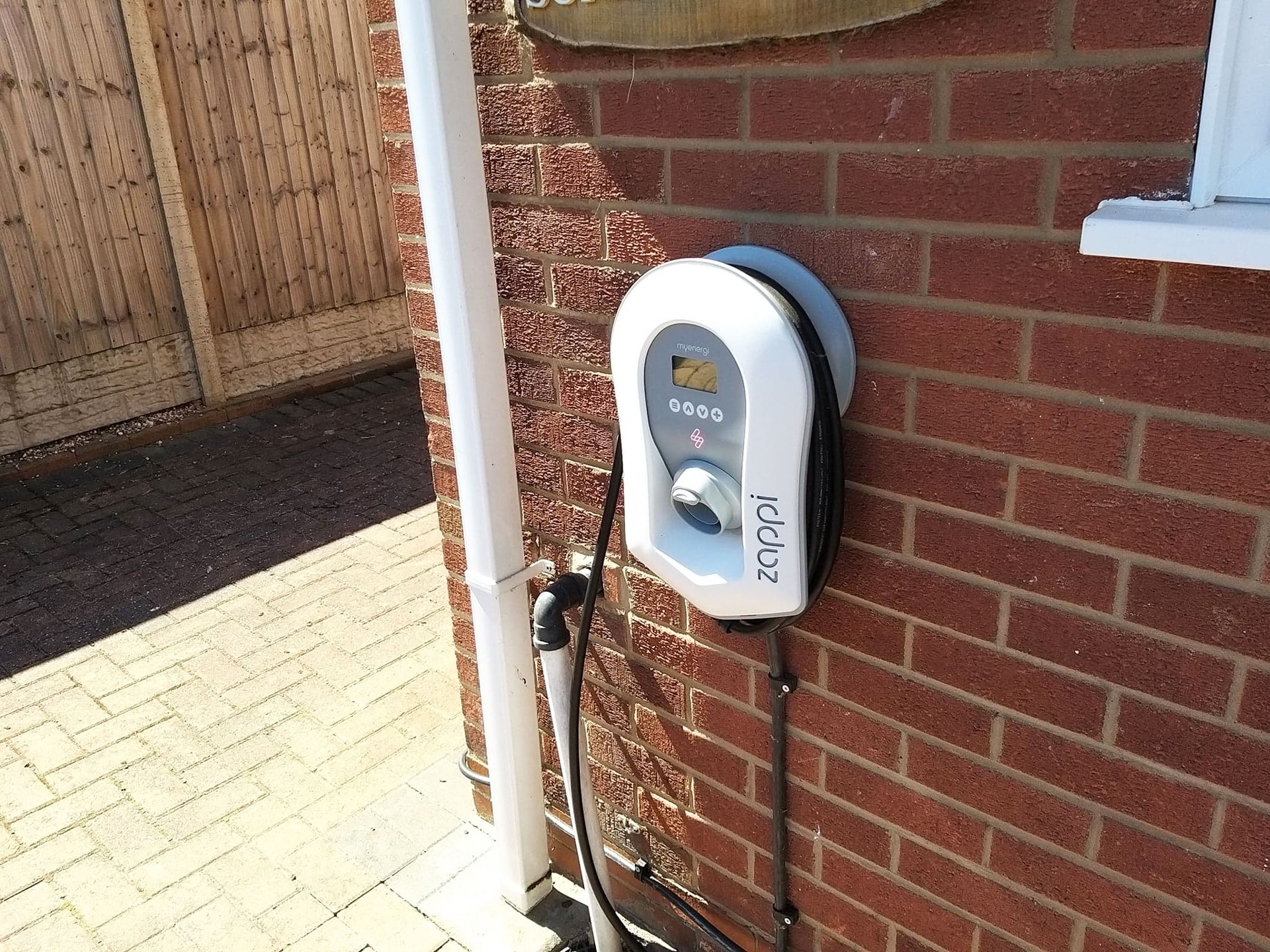
Jason’s car charger port, installed by UK Alternative Energy. | Photo: David Bosworth
Jason described the ease of using his heat pump: “There is less to actually look at, touch or do really.
“There’s a control panel as you’d expect on a boiler or anything. Yes, you can tell it to do something, but honestly, I have not needed to touch that – it just looks after itself.”
He has much to say about smart meters as well, saying that they “open up so many possibilities”.
With energy predicted to rise to £4,427 by January 2023, according to energy analysts Cornwall Insight, consumers should keep an eye on green solutions.
In this day and age, where new gas system installations will be ceased in new homes by 2025, alternative viable energy sources are a young, but burgeoning market in the region.
Smart Energy GB gave this statement: “If you’d like to make more informed decisions about your energy use and be confident that the bill you receive is accurate rather than estimated, it’s worth asking your energy supplier for a smart meter.
“They’re available at no extra cost and come with an in-home display which shows you how much energy you’re using in pounds and pence.
“This won’t stop energy prices increasing when the price cap goes up, but it will give you complete visibility of your energy use and prevent the shock of estimated bills.”
If you are having difficulty with your energy rates, the main advice is to contact your energy provider, but if you’re struggling severely you may be eligible for a hardship fund, depending on which supplier you are with.




